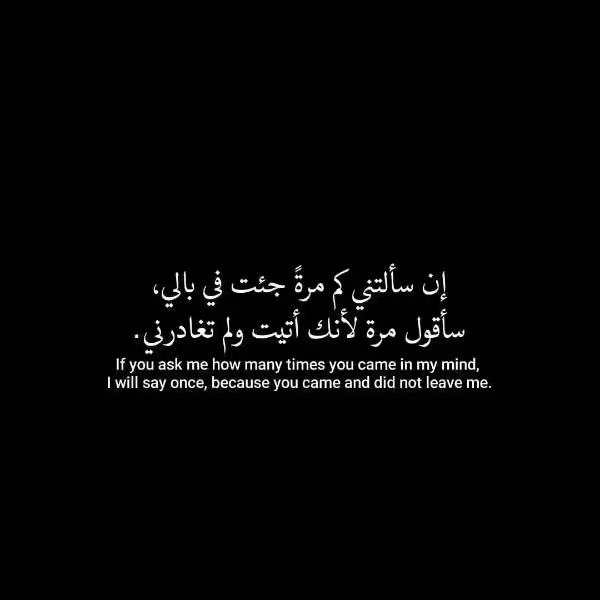
Delving into the intricacies of any language unveils a fascinating tapestry of expression. In Arabic, the concept of love, a fundamental human experience, is conveyed through a rich vocabulary, nuances, and cultural context. This article explores the most common way to express “love” in Arabic, highlighting the crucial elements of its written form and pronunciation. Understanding these details is essential for anyone seeking to communicate effectively in Arabic.
The Correct Spelling: Unveiling the Arabic Word for Love
The Arabic word for “love” is حبّ (hubb). This seemingly simple word holds a crucial linguistic detail: the shadda (doubled consonant) above the letter ba. This subtle difference significantly alters the pronunciation and, consequently, the meaning. The word “حب” (hub) without the shadda would have a different, often less profound, meaning. The shadda, a crucial linguistic marker, signifies a doubled consonant, adding a distinct emphasis and tone to the pronunciation.
The difference between “حبّ” (hubb) and “حب” (hub) is akin to the difference between “book” and “boook” in English. The subtle repetition of the consonant alters the flow and feel of the word, imbuing it with a different emotional weight. This precision reflects the intricate nature of the Arabic language, where subtle variations can greatly impact meaning. This precision is essential for anyone learning Arabic.
Understanding the Pronunciation and Romanization
While the Arabic script itself is beautiful and expressive, it differs from the Latin alphabet used in English. This difference can lead to confusion in romanization. While “hubb” is the most accurate and widely used romanization of the word, you might encounter alternative renderings. However, “Hbb” is not a standard or accurate representation. The correct romanization reflects the doubled consonant, conveying the correct pronunciation and meaning of the word.
Accurate romanization is crucial for effective language learning and communication. It allows learners to connect the written word with the spoken sound, a fundamental step in mastering any language. Using resources that provide authentic Arabic pronunciations is a vital part of this process, especially early on.
Decoding Vowel Signs: A Key to Understanding Arabic
The subtle nuances of Arabic extend beyond the shadda and into the realm of vowel signs. The word “love” in Arabic, حبّ (hubb), does not have a kasrah (a vowel sign) above the letter ح (ḥāʾ). This absence of a kasrah is crucial to understanding the correct pronunciation and meaning. A kasrah above the ḥāʾ, as in the word حُب (ḥub), would completely alter the meaning and pronunciation of the word. This example demonstrates the vital role vowel signs play in the Arabic language.
The absence of a specific vowel sign, in this case the kasrah, influences the rhythm and flow of the word, contributing to the overall impact of its meaning. The subtle differences in vowel signs are crucial. Understanding them is like understanding the punctuation of a sentence in English; each mark conveys a subtle, but important, shift in meaning.
Beyond the Basics: Exploring the Rich Spectrum of Love in Arabic
The word حبّ (hubb), while fundamental, is just one element of the rich tapestry of expressing love in Arabic. The Arabic language possesses a wide range of words and expressions to convey various types and intensities of love. This includes romantic love, familial love, platonic love and more. Cultural context is essential in understanding these nuances. Love isn’t a one-size-fits-all concept. It encompasses a wide range of feelings, and Arabic vocabulary reflects this diversity.
This rich vocabulary showcases the depth of Arabic culture and its ability to express complex emotions. For instance, different words might be used to express passionate love (“عشق – ‘ishq”) versus the tender affection felt for family (“محبة – maHabba”). Understanding these subtle distinctions is crucial for effective communication and appreciation of the cultural context surrounding love in Arabic.
Conclusion: Mastering the Arabic Word for Love
Learning the Arabic word for love, حبّ (hubb), is more than just memorizing a simple word. It’s about understanding the intricacies of the Arabic script, the importance of accurate pronunciation, and the deeper cultural context surrounding expressions of love. By mastering these seemingly minor details, you embark on a journey to appreciate the richness and beauty of the Arabic language. The correct spelling and pronunciation, along with the subtle nuances of the language, contribute to the depth and precision of communication in Arabic.
Frequently Asked Questions about Writing “Love” in Arabic
What is the correct spelling of “love” in Arabic?
The correct spelling of “love” in Arabic is حبّ (hubb). Crucially, this includes the doubled consonant (shadda) above the letter ba. Using just حب (hub) is incorrect. The shadda signifies a doubled consonant, altering the pronunciation and meaning.
How do I pronounce the Arabic word for “love”?
The pronunciation of حبّ (hubb) is crucial. The doubled consonant, represented by the shadda, is pronounced with a strong emphasis on the doubled sound. The vowel sounds are also important. The word is typically pronounced as “hubb”. For accurate pronunciation, consult audio resources.
What is the correct romanization of “love” in Arabic?
The most accurate and widely used romanization for حبّ (hubb) is “hubb”. While some alternative renderings may exist, “Hbb” is not a standard or accurate representation. Using “hubb” consistently aids in accurate language learning and communication.
Why is the absence of a kasrah (vowel sign) above the letter ḥāʾ important?
The word for “love” in Arabic, حبّ (hubb), does not have a kasrah (a vowel sign) above the ḥāʾ. The absence of this kasrah is crucial to the correct pronunciation. Understanding different vowel patterns is essential for accurate pronunciation in Arabic.
How can I improve my understanding of Arabic orthography and pronunciation?
Consult reliable online resources, such as the Arabic.fi website, for detailed explanations and audio examples. Don’t just assume, but verify your understanding by referring to accurate sources. Accuracy in spelling and pronunciation is essential for effective communication.








